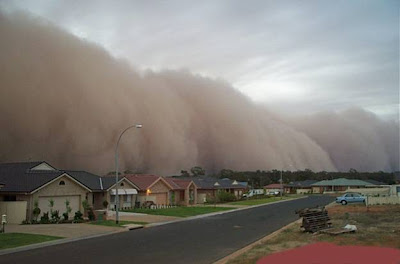 November 04, 2009 - Tsunami becomes one of the dangerous natural disasters in the world. Every one should aware of the Tsunami.
November 04, 2009 - Tsunami becomes one of the dangerous natural disasters in the world. Every one should aware of the Tsunami. The phenomenon we call a tsunami is a series of waves of extremely long wavelength and period generated in a body of water by an impulsive disturbance that displaces the water. Although tsunamis are often referred to as "tidal waves" by English-speaking people, they are not caused by the tides and are unrelated to them.
Detecting tsunamis is a very difficult thing to do. When a wave begins in the deep ocean waters, it may only have a height of about twelve to twenty-three inches and look like nothing more than the gentle rise and fall of the sea surface. An example of how easy tsunamis are to overlook is the Sanriku tsunami, which struck Honshu , Japan , on June 15, 1896 .
Tsunamis in deep water can have a wavelength greater than 300 miles (500 kilometers) and a period of about an hour. This is very different from the normal California tube, which generally has a wavelength of about 300 feet (100 meters) and a period of about ten seconds. (The period of a wave is the time between two successive waves.)
Another important factor in considering tsunamis is the rate at which they lose energy. Because a wave loses energy at a rate inversely related to its wavelength, tsunamis can travel at high speeds for a long period of time and lose very little energy in the process.




























0 comments:
Post a Comment
We encourage people to contact us with any comments regarding news or any other queries about this site. We will respond you respectively and promptly.
We are going to moderate comments only to avoid unwanted and spam messages.
Thanks for your interest ! ! ! ! ! ! !